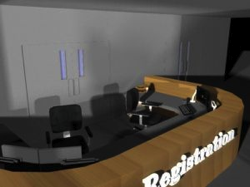
I visited cardiologist Eric Topol at the Scripps Green Hospital in La Jolla, California, one day this summer. He’d had a busy morning seeing patients and, by about noon, was claiming to have already saved the medical system tens of thousands of dollars using his iPhone and a pocket-sized ultrasound machine. Then he pointed to the stethoscope in his pocket and said he hasn’t used it in three years. “I should just throw it out,” he said. “This is basically a worthless icon of medicine.”
Topol is perhaps the most prominent advocate in the U.S. of how digital technology can lead to less expensive health care, and he invited me to see the savings in action. As we lope toward the exam room, Topol, slightly hunched and repeatedly turning to deal with questions flying at him from his staff, seems slightly rattled by the commotion and barrage of demands, but a calm sets in the moment he enters the exam room. He folds his arms across his chest as a young colleague updates him on the patient’s history. Topol introduces himself to the 85-year-old man, who has been tiring easily as of late, and then the doctor immediately pulls out his iPhone.
